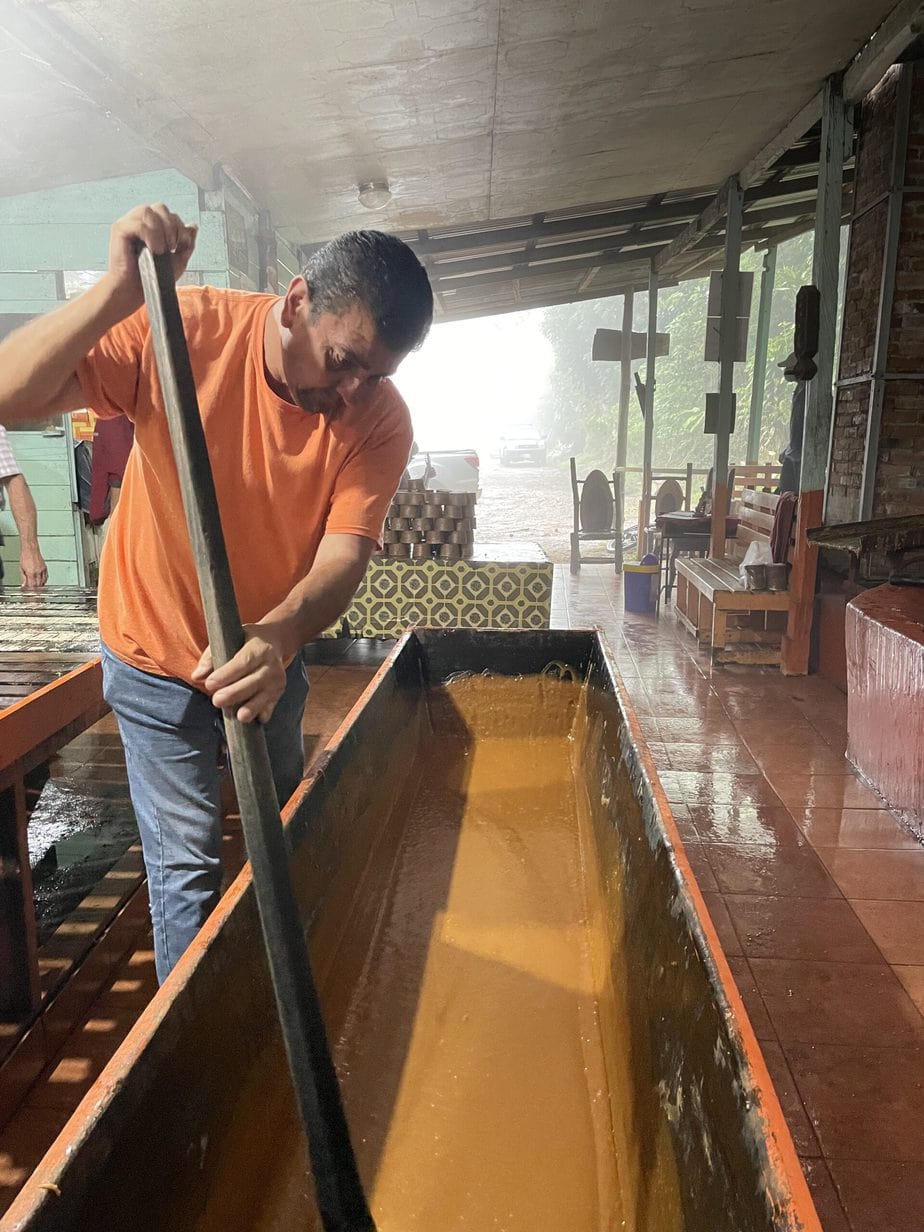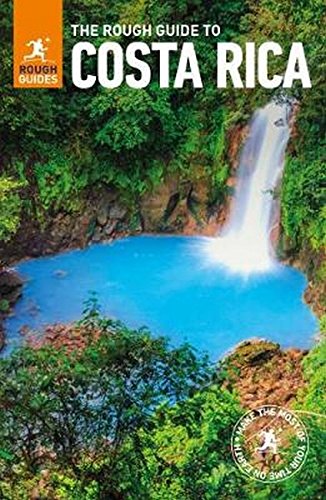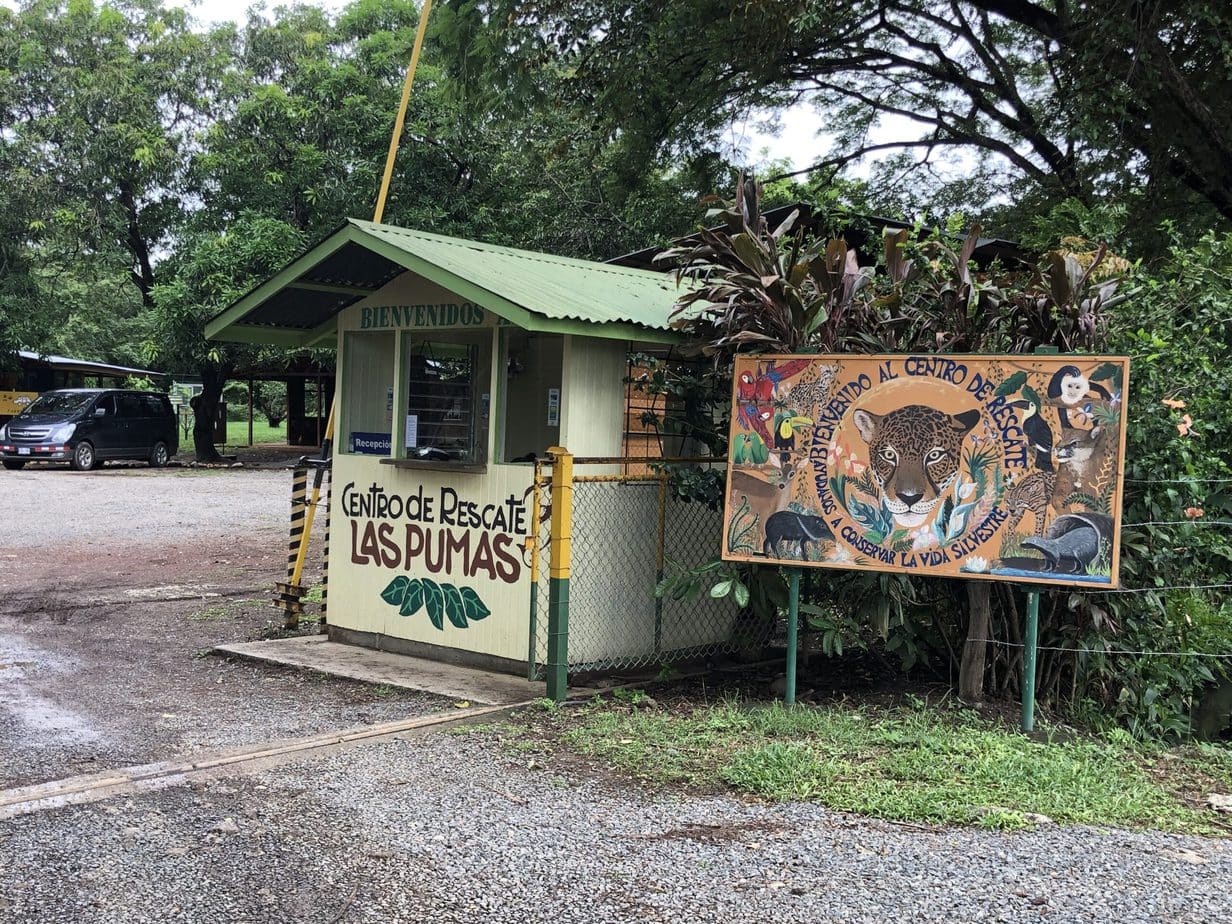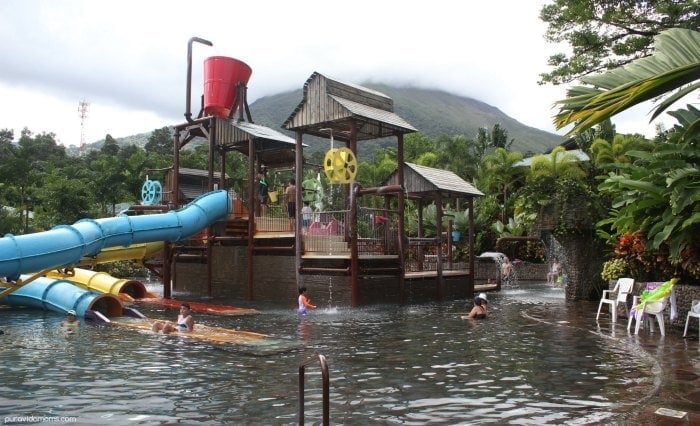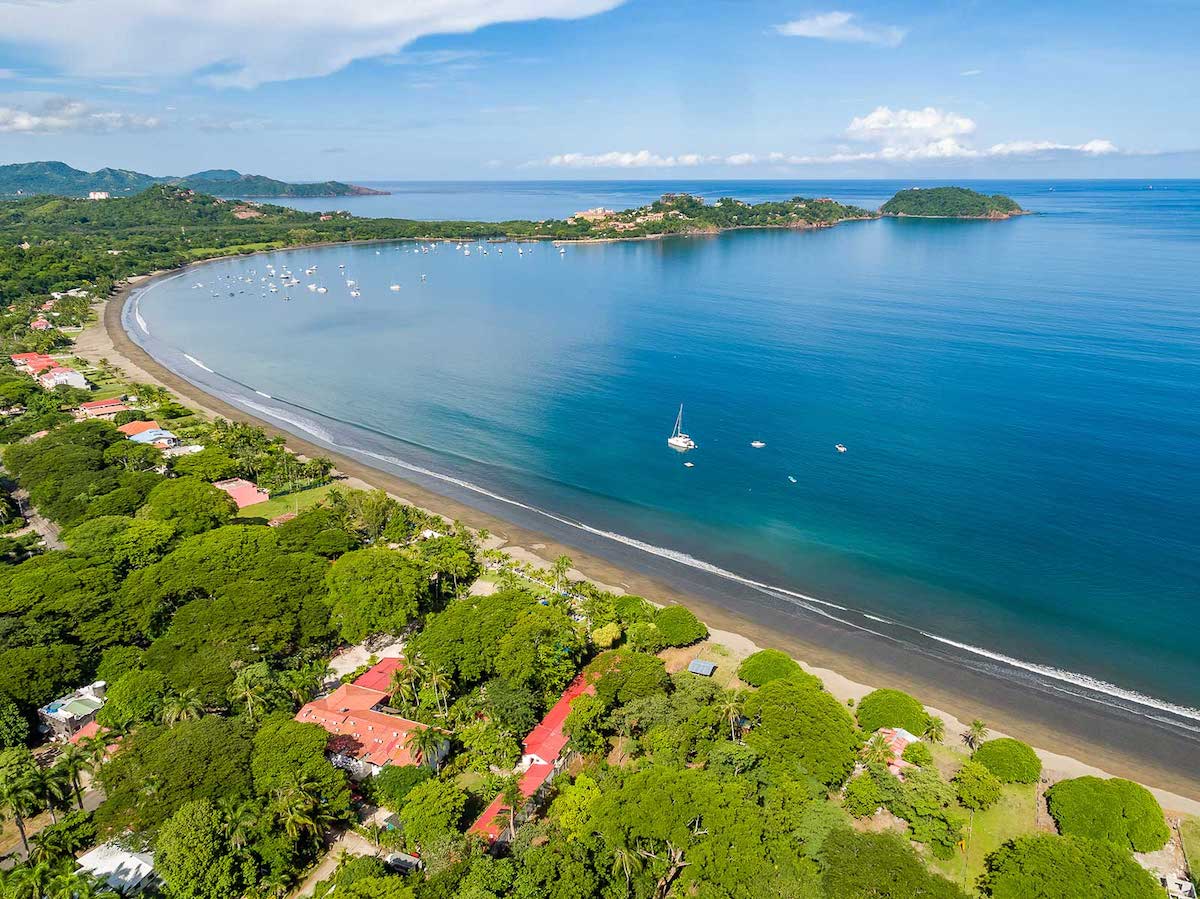Best Places to See Monkeys in Costa Rica
This post may contain affiliate links.
Just after we were married, my Costa Rican husband and I were in Tamarindo with my mother-in-law and my parents. We were sitting out on the patio enjoying a cold Imperial when we suddenly heard the cries of the famous howler monkey. My husband right then decided he would make sure my dad saw the monkey before it got dark.
For over an hour, they imitated the howler monkey’s cry and ran around the forest looking for the monkey in the flesh. Periodically, they would appear running past the pool or through our patio. They never found the monkey, but did sure did have sore throats the next morning!
Just like looking for sloths, monkey watching is a well-liked pastime in Costa Rica. Both locals and foreigners enjoy the amusing antics of the primates that live in the prolific jungles and rainforests. In this blog post, I’ll tell you exactly where to see monkeys in Costa Rica and what species to find so you too can have fun and fulfilling wildlife spotting excursions.
RELATED POST: Costa Rica With Kids- The Complete Guide
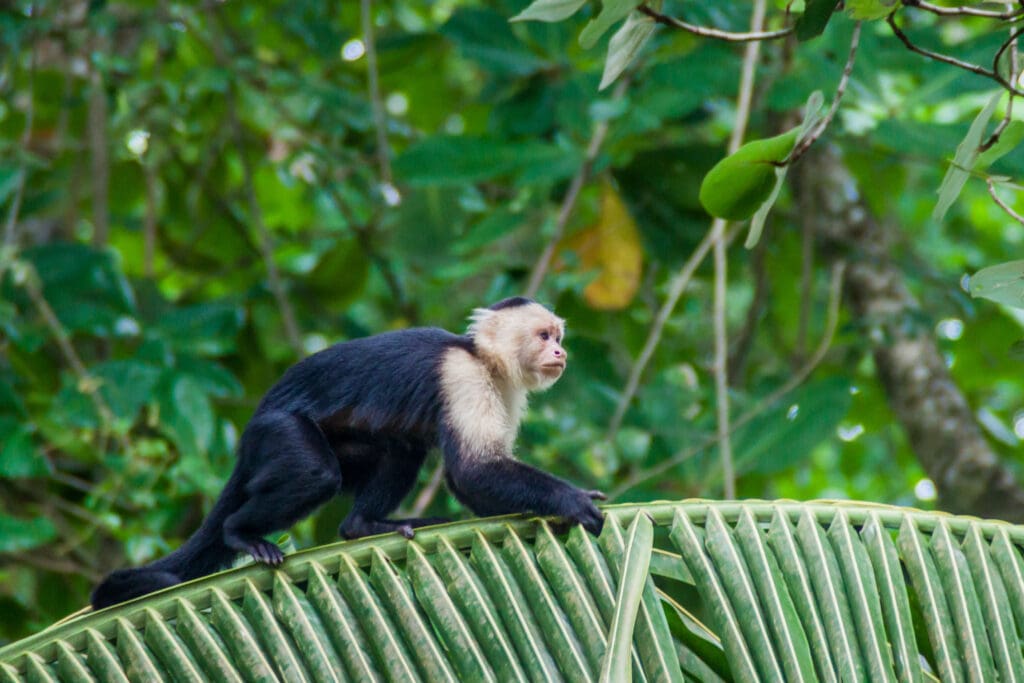

Types of Monkeys You’ll See in Costa Rica
The lush forests of Costa Rica are home to four different monkey species – the mantled howler, spider, squirrel, and white-faced capuchin – all with distinct features, personalities, and characteristics that make them unique.
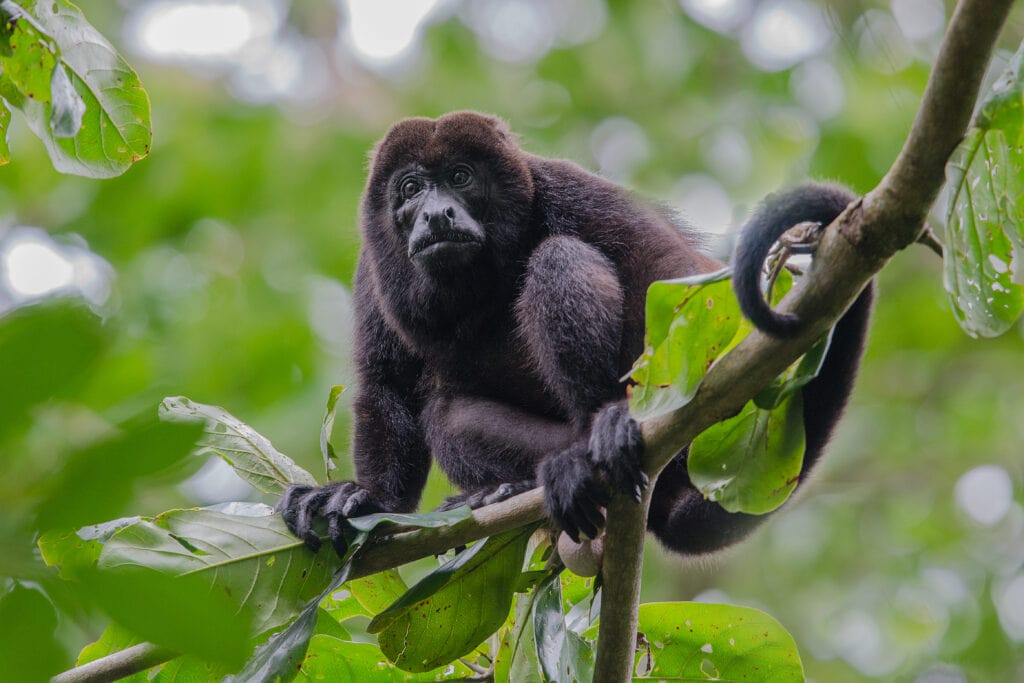
Mantled howler monkey: Famous for their loud “howling” noises, mantled howler monkeys are among the most common monkey species in Central America. They’re large with black fur and a very long prehensile tail, and don’t move fast or even as much as other species. You’ll often see them foraging for fruits, nuts, leaves, and flowers up high in the trees and they’ll hardly descend to the ground.
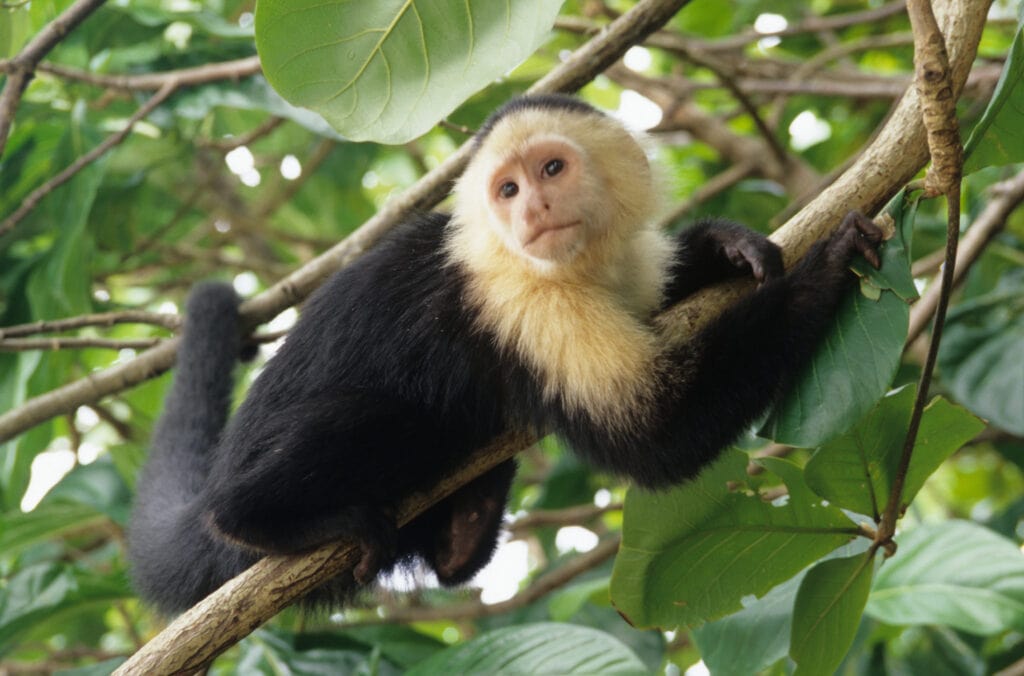
White-faced capuchin monkeys: As the name suggests, the white-faced monkey has a white face that contrasts its dark body. They also have a very long tail. They’re just as common as howler monkeys but much smaller and more intelligent; they are the ones you see in movies, as they’re super easy to train. Also, unlike howlers, capuchins don’t spend their entire life on treetops; they’ll often come down to look for small invertebrates to add to their plant diet.
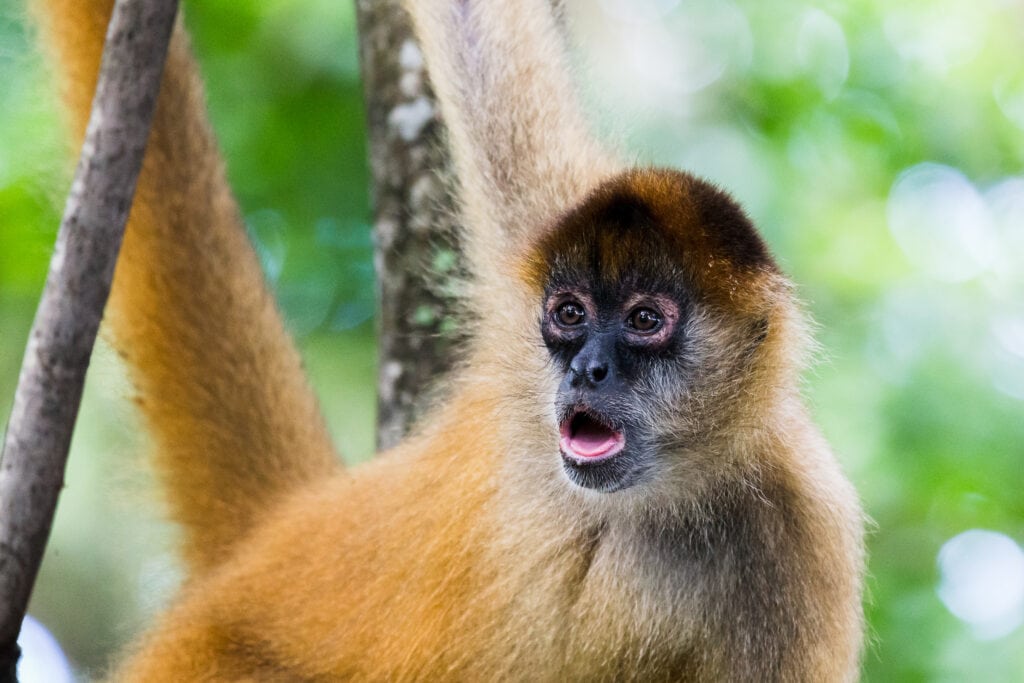
Geoffroy’s spider monkey: With black/brown fur, disproportionately long limbs, a slender body, and a distinctive pot-belly, Geoffroy’s spider monkeys are a delight to watch as they swiftly swing through tree canopies with their long tails looking for nuts, fruits, flowers, nectar, leaves, bark, and small insects to feed on. Unfortunately, due to loss of habitat and hunting by humans, spider monkeys are less common than their howler and capuchin sisters. You’ll likely only find them in remote, protected areas.
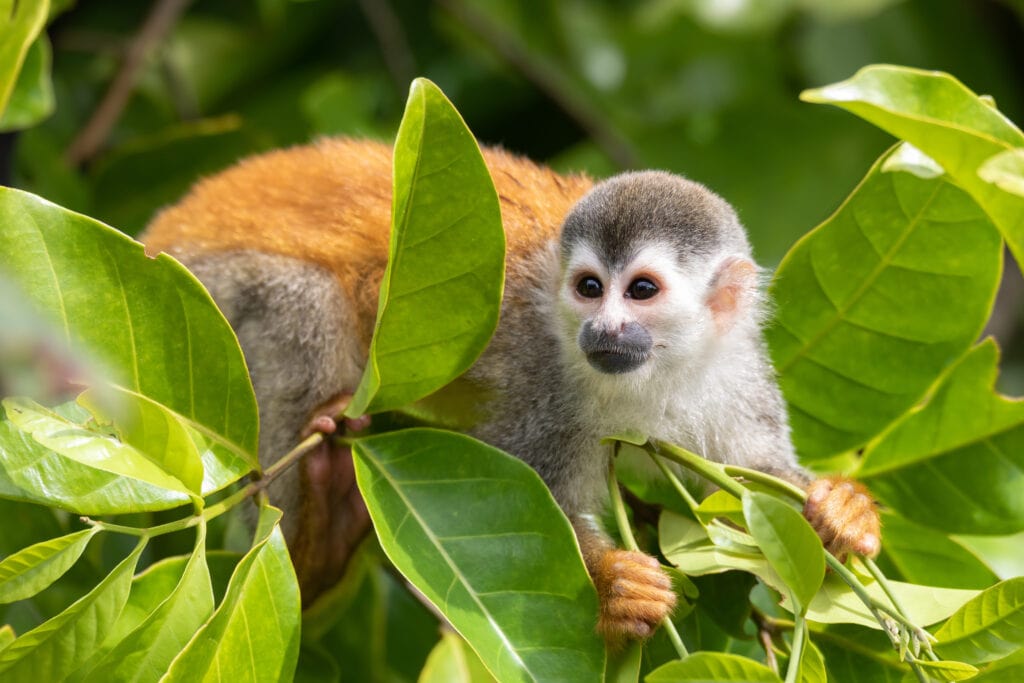
Central American squirrel monkey: The highly endangered Central American squirrel monkeys are tiny, agile, and very intelligent creatures only found in protected rainforests. Donning an orange coat on their feet, hands, and back, black and white face, dark rims around their snouts, mouths, and eyes, and an olive hue on their hips, tails, and shoulders, these little animals are truly distinctive. Their diet includes fruit, leaves, nectar, flowers, insects, spiders, birds, bats, frogs, and lizards.
So, where can you find these monkey species?
Manuel Antonio Park
If there’s a place you’ll not regret touring, it’s the Manuel Antonio National Park. There are monkeys everywhere! On the trees. On your back. On the beach. And if you’re staying in one of the hotels nearby, you’ll almost always see monkeys on your balcony.
The main attraction here is the squirrel monkeys that can be seen hopping from one branch to another in exciting numbers. But you’ll also see howlers and capuchins by the entrance who often wait there for visitors to feed them. Just don’t do it; as tempting as it may seem, feeding the animals is illegal.
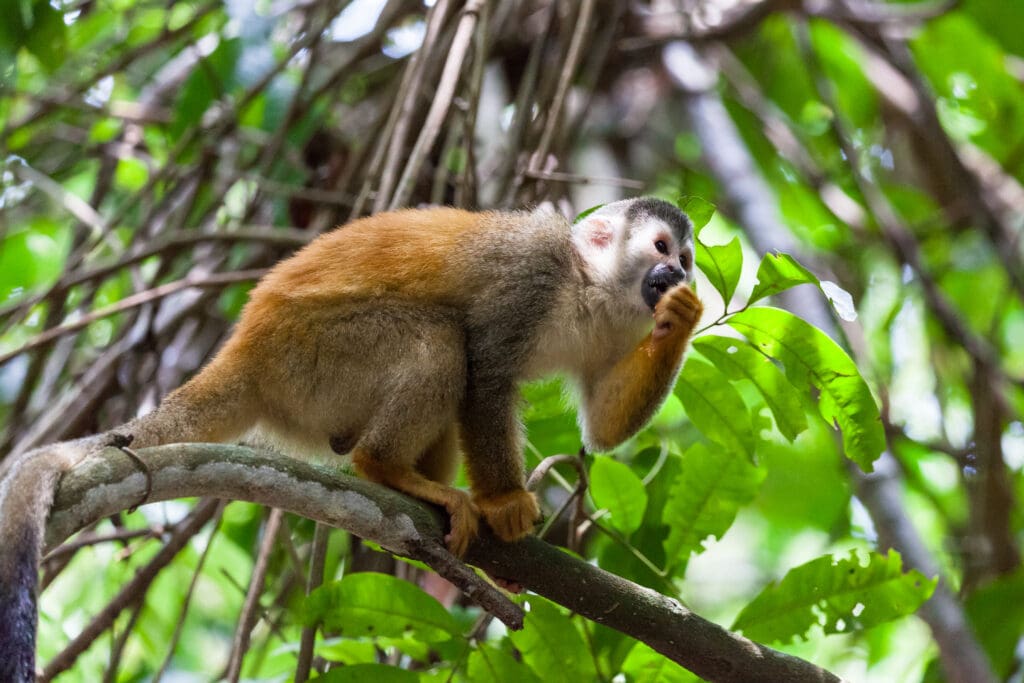
Corcovado National Park
Located in southwest Costa Rica on the remote Osa Peninsula, the Corcovado National Park’s rain forests are filled with incredible wildlife. The protected lowland rainforest, jolillo palm forest, highland cloud forest, mangrove swamps, and beach habitat provide a safe haven for endangered wildlife, making this one of the best places to see some of the shyest and rarest animals.
All four monkey species can be found here! And not just that; over 350 bird species, more than 10,000 insect species, dozens of snake species )including the famous boa constrictor), humpback whales, two-toed sloths, the three-toed sloth, and more hang out in these dense tropical forests. Plan a day hike or night trek with a guide and spot as many animals as you can.
Tortuguero National Park
The vibrant Caribbean coast is home to vast, untouched tropical rainforests, making it a popular wildlife hotspot. Tortuguero, one of the most iconic tourist destinations in the region and in the country is not just a nesting ground for sea turtles; it is also one of the best places to see monkeys.
Here, you will find howler monkeys, capuchin monkeys, and spider monkeys swinging up in the trees on the land and in the mangroves, where they dwell, feed, and breed without the risk of human endangerment. Have a local guide walk with you along the trails or paddle you through the meandering canals in the mangroves so you can see these majestic creatures and other wildlife up close.
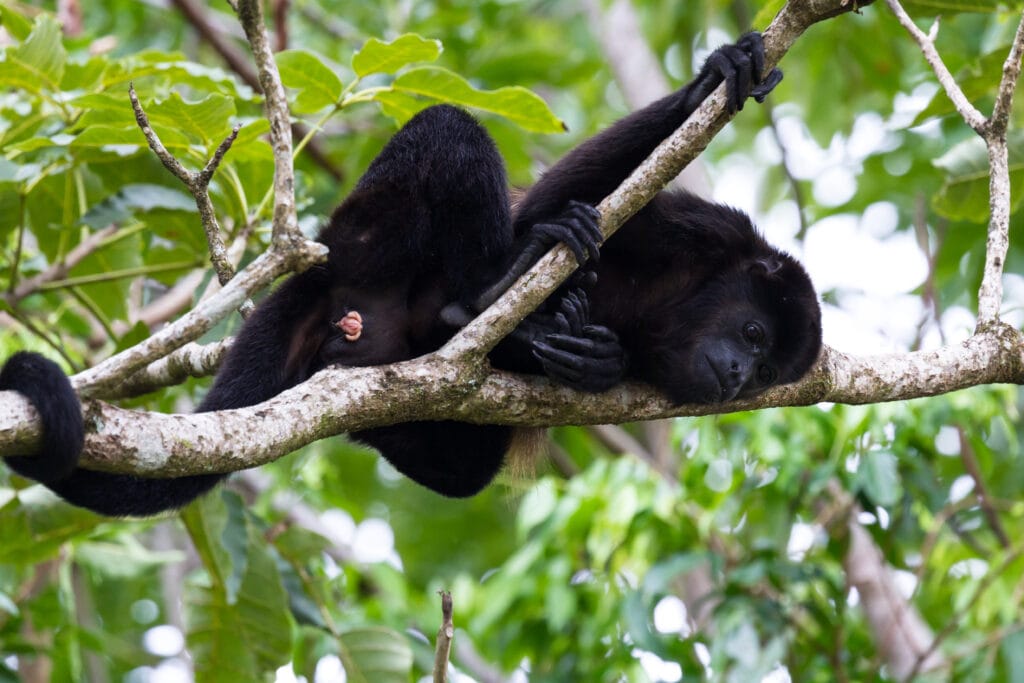
Arenal Volcano Area
The area around Arenal Volcano is blessed with natural beauty that attracts thousands of nature enthusiasts and adventure lovers every year. If you’re staying in La Fortuna (the nearest town), especially, it is likely that you’ll be able to see plenty of wildlife sometimes even without having to leave your hotel.
Monkeys, in particular, are abundant here; it’s not uncommon to see some howlers on top of your hammock! A great place to spot the amazing creatures, however, is the Arenal Volcano National Park. Plan a visit and view three monkey species – howler, spider, and white-face. But ziplines, hanging bridges, and hiking trails through the dry forests and cloud forests areas and high canopies are also fantastic for viewing.
Monteverde Cloud Forest
Some of the best wildlife viewing in the world is found at Monteverde which is why it’s one of the premier biological research stations in the world. From the tree branches to the forest floor, you can expect to find many species of monkeys here. I recommend you go with a good guide in order to get the most out of your visit to the reserve.
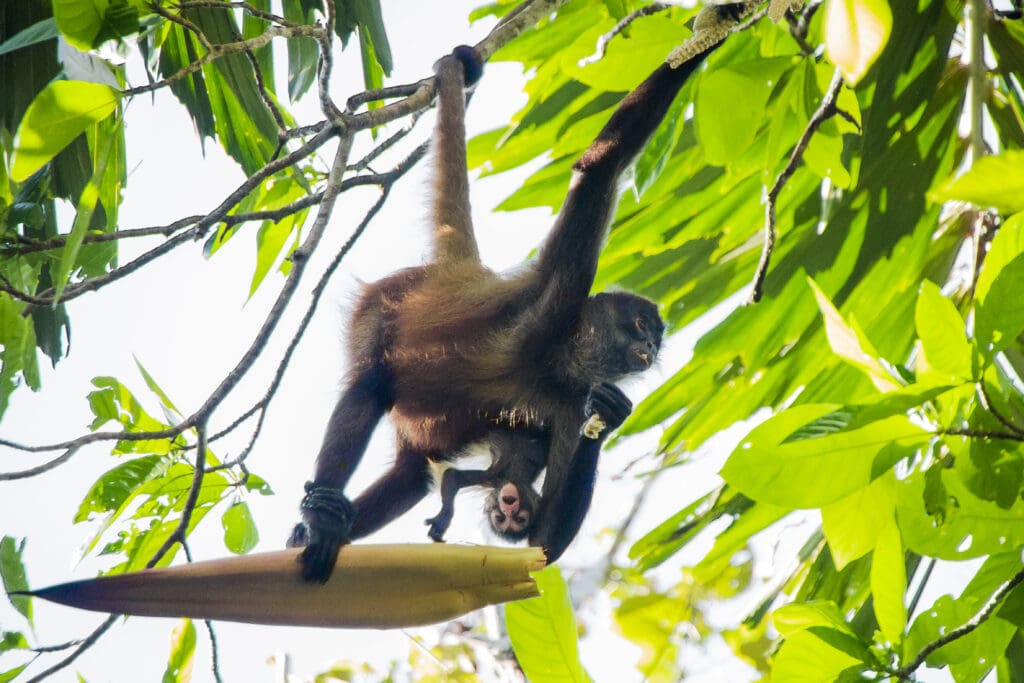
Animal Sanctuaries
While animal rehabilitation centers may not provide the thrill of really connecting with nature, they are another awesome place to see monkeys close up. There are dozens of animal sanctuaries in Costa Rica that have replicated the natural habitat for monkeys where endangered species can have another chance at life in a safe and secure environment.
Most of these places will offer educational tours that give important information about the animals including how they ended up there and their efforts in rehabilitating and keeping them from danger. Some even have community-oriented projects that allow visitors to adopt the animals, make donations, or even volunteer to help with caring for the animals or maintaining the habitat. Our favorite sanctuaries are La Paz Waterfall Gardens, Zoo Ave, and the Las Pumas rescue center.
Tamarindo Beach
The paths leading to Tamarindo beach are full of monkeys, thanks to the verdant greenery around. The howler and white-faced capuchin monkeys are the main species in the area, inhabiting the rainforests and mangroves.
Take a walk around sunrise or sunset and you’ll spot random monkeys everywhere. During the day, it might be a little difficult to see them, as they are rather sluggish. But that doesn’t mean you still can’t have fulfilling monkey watching; you can take a boat tour to Tamarindo estuary where spotting the cute animals is guaranteed.
Turtle Island
Isla Tortuga is a very popular day trip from Jaco or Puntarenas or a popular excursion with cruise ship arrivals. You’ll take a boat to a pristine clear-water beach where you’ll enjoy food, drinks, snorkeling, and more. The bonus? There are monkeys on the island, and good tour guides will also take you to another, smaller island where you can see the white-faced capuchin up close. We went to Turtle Island as a side excursion from the Bioluminescent Bay near Paquera.
Playa Nacascolo
One of our very favorite hidden beaches is Playa Nacazcolo, and as soon as you arrive you’ll be bombarded with white-faced capuchin monkeys scampering through the trees. I highly recommend the beach and the wildlife sightings.
Join me over at my favorite place- Instagram.

Christa Jimenez
Welcome! I’m Christa, a Spanish teacher married to a handsome Costa Rican and mother of two bilingual daughters. We’ve spent over 25 years living in and traveling to Costa Rica with our daughters, and this website is my love letter to all things Costa Rica- and to bilingual parenting too. You can read my full story here. Thanks for stopping by!



